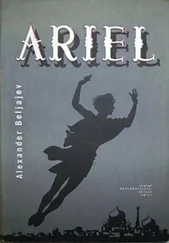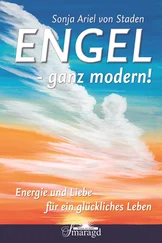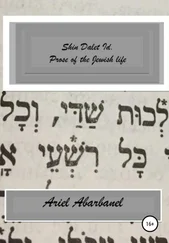Ariel Toaff - Blood Passover
Здесь есть возможность читать онлайн «Ariel Toaff - Blood Passover» весь текст электронной книги совершенно бесплатно (целиком полную версию без сокращений). В некоторых случаях можно слушать аудио, скачать через торрент в формате fb2 и присутствует краткое содержание. Жанр: Религиоведение, на английском языке. Описание произведения, (предисловие) а так же отзывы посетителей доступны на портале библиотеки ЛибКат.
- Название:Blood Passover
- Автор:
- Жанр:
- Год:неизвестен
- ISBN:нет данных
- Рейтинг книги:3 / 5. Голосов: 1
-
Избранное:Добавить в избранное
- Отзывы:
-
Ваша оценка:
- 60
- 1
- 2
- 3
- 4
- 5
Blood Passover: краткое содержание, описание и аннотация
Предлагаем к чтению аннотацию, описание, краткое содержание или предисловие (зависит от того, что написал сам автор книги «Blood Passover»). Если вы не нашли необходимую информацию о книге — напишите в комментариях, мы постараемся отыскать её.
Blood Passover — читать онлайн бесплатно полную книгу (весь текст) целиком
Ниже представлен текст книги, разбитый по страницам. Система сохранения места последней прочитанной страницы, позволяет с удобством читать онлайн бесплатно книгу «Blood Passover», без необходимости каждый раз заново искать на чём Вы остановились. Поставьте закладку, и сможете в любой момент перейти на страницу, на которой закончили чтение.
Интервал:
Закладка:
76
In 1476, in a document from Verona, Salamoncino's son is referred to as "Salamoncinus quondam Salamonis de Plebe" (cfr. Varanini, Appunti per la storia del prestito , cit., p. 627).
77
On Manno di Aberlino (Mendele b. Abraham), banker at Pavia and one of the most important exponents of the Jewish community in the Duchy of Milan, see Sh. Simonsohn, The Jews in the Duchy of Milan , Jerusalem, 1982, vol. II, pp. 486, no. 1144 and 534, no. 1267. Manno da Pavia's geneology has been reconstructed by Carpi (Notes on the Life of R. Judah Messer Leon, cit., p. 62). The Jews in the Ashkenazi community of Northern Italy called Manno da Pavia "uno de' piu ricchi hebrei" [“one of the richest Jews”].
78
Cfr. Simonsohn, The Jews in the Duchy of Milan , cit., vol. II, pp. 864-865, no. 2078.
79
In 1476, as shall see below, Manno offered to pay an assassin to kill the bishop of Trent, offering him a sum which would have had to be paid to him in part out of the bank in Venice. Cfr. Divina, Storia del beato Simone da Trento , cit., vol. II, p. 167.
80
"Dum ipse Presbyter Paulus esset Papiae, Man Judaeus ibi habibator dedid sibi Presbytero Paulo certas litteras, quas deferre debebat Venetias et illas consignare cuidamn Omnibono Judaeo, quae litterae, prout Man dixit sibi Presbytero Paulo, continebant istud, videlicet quod Man mittebat ipsum Presbyterum Paulum ad Omnibonum ut idem Omnibonus instrueret ipsum [...] de modo venenandi praelibatum Reverendissimum D. Episcopum Tridentinum" [Approximately: “When Paolo the priest was in Padua, Manno the Jew, who lived there, gave Paolo, the priest, certain letters which he was to take to Venice and deliver to a certain Omobono, a Jew. The letters said that Manno was sending Paolo to Omobono and that Omobono was to instruct the priest […] on how best to poison the Most Reverend Bishop of Trent”]
(cfr. [Bonelli] Dissertazione apologetica , cit., pp. 146-147).
81
Cfr. Divina, Storia del beato Simone da Trento , cit., vol. II, p. 147.
82
The records of the Trent trials contain transcriptions, marred by many errors, of a letter in Hebrew, signed by Manno da Pavia and addressed to Omobono in the month of March 1476 ("all' esperto medico Simcha Bunim Sal di Venezia"). The letter had been confiscated from the priest Paolo da Novara, who intended to visit Venice to meet the Jewish physician according to instructions received. The letter carried information relating to the forthcoming payment of 90 ducats "nelle mani della persona in oggetto" [“into the hands of the person in object”] (the beneficiary is a Christian), as part payment of an agreed sum. The message contains a covert allusion to the delicate mission which the priest from Novara intended to undertake, and to Omobono's involvement in the conspiracy against Hinderbach: "Se il latore della presente lettera (sc. Paolo da Novara) ti parlara, prestagli ascolto e poi decidi secondo la tua intelligenza" [“If the bearer of the present letter speaks to you, pay attention and then decide according to your intelligence”] (Archivio di Stato di Trento [henceforth: AST], Archivio Principesco Vescovile, s.l., 69, 68). Another letter, preserved in the same compendium, but written in yiddish and dated 5 May 5236 (=1476) contains confirmation of the physician Omobono di Venezia's major role within Ashkenazi society of northern Italy and of the fear which he inspired among the Jews themselves: "Sappiate, miei cari che Bunim (Omobono) il medico ci ha portato un invito, che ci obbliga a recarci a Padova, perche e lui stesso a convocarsi tutti cola [...], ma qui, grazie a Dio, non abbiamo paura di lui" [“Know, my dear friend Bunim (Omobono), the doctor has brought us an invitation, which obliges us to go to Padua, because he’s inviting us all there personally […] but here, thank God, we are not afraid of him”].
83
On these events, see Divina, Storia del beato Simone da Trento , cit., vol. II, pp. 146-177.
84
Cfr. D. Carpi, L’individuo e la collettività. Saggi di storia degli ebrei a Padova e nel Veneto nell'eta del Rinascimento , Florence, 2002, pp. 39, 48.
85
On the activities of Marcuccio at Padova and Piove di Sacco, cfr ibidem, pp. 45-50.
86
Girolamo Campagnola da Padova, in an unpublished oration, written after 1480 in celebration of the martyrdom of Simone da Trento and of Sebastiano Novello at Portobuffolè, recalled Marcuccio’s exasperating arrogance, at that time a money lender at Montagnana: "Quis Marcutio fratre (Salamoncini hebraeo), etiam carcere concluso, audacior et insolentior unquam fuit? Ille mihi ait: scias, velim, Christiani nominis esse neminem, qui mihi digiti, ut ajunt, offensiunculam faciat, quin alteram duorum sibi lacertorum non reddam" [Approximately: “Is there anybody more audacious and impudent than Marcuccio, the brother of Salmoncino the Jew, who spends half his time in jail? He told me, look, no Christian would dare do me any offense, without getting a good beating from two of his henchmen”] (cfr. [Benedetto Bonelli], Dissertazione apologetica sul martirio del beato Simone da Trento nell'anno MCCCCLXXV dagli ebrei ucciso , Trent, Grianbattista Parone, 1747, pp. 280-281).
87
On 27 February 1473 Marcuccio, at that time a resident of Padua, together with his brother Salomoninco and their father Salomone da Piove, were denounced for calumny and embezzlement by a law student at the Studio (ASP, Notarile, Luca Talmazzo, 253, cc. 252r-254r). On his long residence in Montagnara, documented since 1475, his activity as an approved money lender and the events linked to the visit of Bernardino da Feltre, see, in particular, V. Meneghin, Bernardino da Feltre e I Monti di Pietà , Vicenza, 1974, pp. 489-502.
88
ASV, Consiglio dei Dieci, Lettere, file 2 (1476-1483). The heads of the Consiglio called Marcuccio "fidelis noster civis Marcuonus (recte: Marcutius) ebreus quondam Salomonis de Plebesaccii" [“Marcuccio, loyal citizen of our city, (son of) the late Salamone di Plebe di Sacco”] , then a resident of Montagnana. The privileges Marcuccio enjoyed, and his father as well, constituted an extension of those granted by Venice to David Mavrogonato and his family in the past. The Doge, in a letter to the rulers of Candia in 1532, referring to Meir Mavrogonato, a descendent of David, recommended the application in his regard of the privileges which he enjoyed, "essendo trattato come li cittadini Venetiani nelle datiii et alter fattioni, et esento lui et figlioli dell'angarie che fanno l'Hebrei, secondo la forma delli soi privilegge" [“being treated like the citizens of Venice in all respects, and free of the annoyances suffered by Jews, according to the manner of their privileges”] (cfr. D. Jacoby, On the Status of Jews in the Venetian Colonies in the Middle Ages , in "Zion", XXVIII, 1963, pp. 57-69 [in Hebrew].
89
On Salamoncino’s mercantile and financial activity at Piove di Sacco, Padova and Verona, see D. Jocoby, New Evidence on Jewish Bankers in Venice and the Venetian Terraferma (c. 1450-1550) , in A. Toaff and Sh. Schwarzfuchs, The Mediterranean and the Jews. Banking, Finance and International Trade (XVI-XVIII Centuries), Ramat Gan, 1989, pp. 155-156; Capri, L’individuo e la collettività , cit., pp. 54-58; G.M. Varanini, Appunti per la storia del prestito e dell'insediamento ebraico a Verona nel Quattrocento , in G. Cozzi, Gli ebrei e Venezia (secoli XIV-XVIII), Milan, 1987, p. 621.
Читать дальшеИнтервал:
Закладка:
Похожие книги на «Blood Passover»
Представляем Вашему вниманию похожие книги на «Blood Passover» списком для выбора. Мы отобрали схожую по названию и смыслу литературу в надежде предоставить читателям больше вариантов отыскать новые, интересные, ещё непрочитанные произведения.
Обсуждение, отзывы о книге «Blood Passover» и просто собственные мнения читателей. Оставьте ваши комментарии, напишите, что Вы думаете о произведении, его смысле или главных героях. Укажите что конкретно понравилось, а что нет, и почему Вы так считаете.












